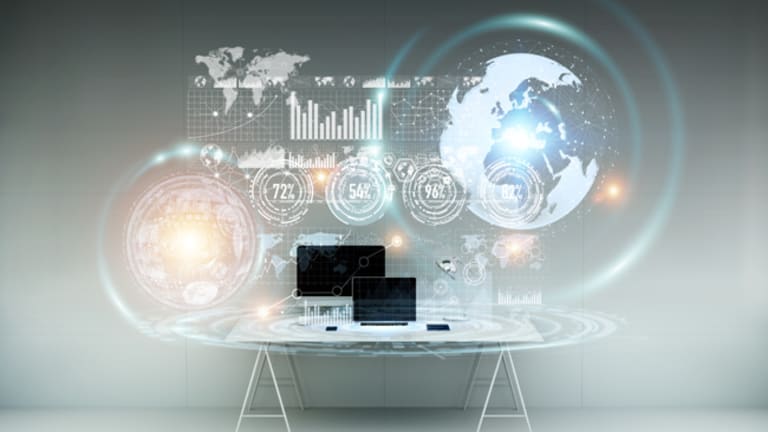
The rise of the digital workplace
Strategic HRHR Technology#RiseofWorkTech#HRTech
The impact of COVID-19 in driving forward the global digital transformation agenda will no doubt be felt for decades to come, as an undeniable surge of technological innovation, adoption, and digitalization permeates through almost all aspects of the workplace.
It has also added a new meaning to the old adage that necessity is the mother of all invention. COVID-19 has forced many organizations to recognize that they must be equipped with important tools for productivity, connectivity, and employee engagement, in order to respond with agility to the disruptive challenges facing the world today.
Understanding the core benefits and challenges in digitalizing the workplace
From talent management to recruitment, operations and administration, the workplace has gone from gradual evolution to rapid revolution - overnight. There are many challenges imposed in the new world order - a socially distant workforce, evolving nature of work, and changing guidelines around employee health and safety - but beyond just looking internally at what the current requirements are, organizations now also have a greater understanding that there is a real and pressing need to invest in an integrated digital strategy moving forward. Workday’s own research has shown that over a third of business leaders (36%) have said that in three years’ time, the large majority of revenues will come from purely digital streams.
Success today requires organizations to operate at greater speed and efficiency. However, most organizations find themselves caught within a growing technology acceleration gap where their existing skills, resources, and systems are not compatible with the global pace of change. This acceleration gap was not started by a once-in-a-generation pandemic, but it has certainly brought it to the forefront of the business agenda.
The COVID-19 pandemic has highlighted just how inadequate traditional enterprise systems are in helping organizations respond to the rapidly digitalizing world. Static and bureaucratic legacy systems are no longer sufficient to provide the agility and speed required to help business leaders deliver the future-proof workforce environment that today’s fast-moving world requires. The pandemic has shone a spotlight on the many companies who are ill-equipped to address technological change and risk being left behind. Against this backdrop, business leaders need to properly weigh the key benefits and challenges when integrating technology into the workplaces of the future.
There are many core benefits from using technology in the workplace, from uncovering talent gaps to enabling greater workforce flexibility or elevating the employee experience. The impetus for change however, really boils down to organizations wanting to establish a greater sense of control of their operating environment. Against the uncertainties of the future, organizations can use technology to readily generate a single view of their people, operations, and finances, forecasting how they will be impacted by dynamic conditions and harnessing the power of technology fully.
Leveraging data analytics and machine learning in talent management
An important consideration for many organisations today is just how they can use a seemingly never-ending stream of data effectively. According to a report by Domo, over 2.5 quintillion bytes of data are created every single day, amounting to almost 1.7MB of data created every second for every person on earth. This highlights the voluminous challenge facing many organizations today.
This is where the concept of machine learning can come in and add value to many organizations. As a method of automated and cognizant data analysis that independently learns and persists throughout all scenarios and situations, machines can learn how to process data and make recommendations through training and/or controlled input data. Given basic instruction, they can excel in a wide-range of applications that humans or other basic algorithms are unsuited for.
The fundamental benefit for machine learning in the organization is how time-saving and resource-efficient it is, all while significantly improving the user experience. Machine learning powers faster and more streamlined HCM functions across an entire employee lifecycle. Machine learning also allows us to sift through tremendous volumes of data to identify patterns and make predictions about future events. In addition, machine learning increases efficiency and eliminates many tasks that were once manual, enabling employees to focus on making higher-value contributions.
Quantifying the returns and benefits of HCM investments
The rise of the digital era has made it increasingly difficult for organizations to ignore the value that having the right HCM partner brings to the table, to the point where many business leaders are instead talking about the cost of inaction, or what are the costs to their organizations from not working with the right technological partner. To close the widening acceleration gap today, organizations need to realize that sticking with the status quo or choosing “do nothing” inertia are not viable strategies. Instead, they need to choose a system that can keep up with the growing pace of change and help close that gap.
For those who still are not convinced, thankfully, there are many simple and tangible methods to estimate the benefits. Some of these include lower personnel costs, from less time and resources spent to management and recruitment; greater administrative productivity, by freeing up outdated operational processes; and better employee experience and productivity, with less turnover in skills.
Most importantly, beyond any dollar return on investment, business leaders now have the power to shape their workplace and surroundings and build a vibrant, innovative, and outperforming organizational culture that is well-poised for future success.














